Planting
At last the exciting part. I went to an Alpine Garden Society Show at which there were a number of specialist nurserymen. I bought 30 plants suitable for growing under glass . This is one of them, an Erigeron.
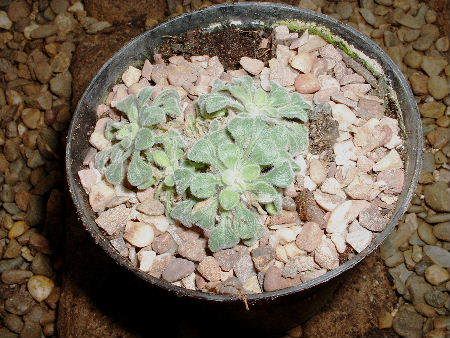
There actually is a technique used for planting up a crevice garden like this.
As you can see the original plant in its soil is wider than the gap in which it is to be planted. Also the soil in which it is growing is far richer than the soil in the bed and it also contains slow release plant food granules. I am also (after one or two bad experiences) a bit suspicious. In the past I have found both vine weevil grubs and root aphids in newly acquired plants.
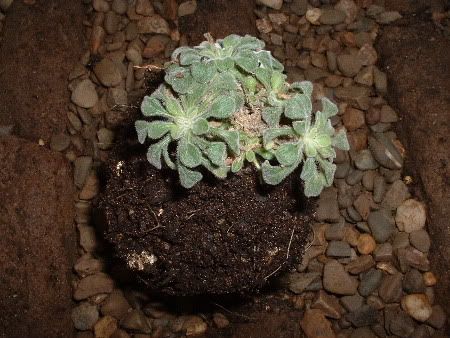
I gently removed as much soil as I could from the plant without damaging the roots. There are some plants which would react badly to this treatment. It would be unwise to treat Daphne for example like this or Acantholinum. It is wise to check in the books for the words, "does not like root disturbance" before one proceeds. I used a 2.5cm wide spatula to scrape away the gravel mulch and to dig a hole for the roots, making sure the hole is big enough for the roots be spread out.
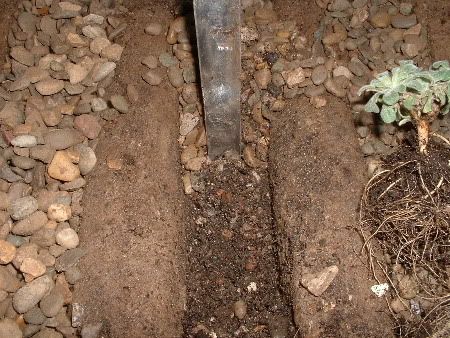
The roots are gently spread out in the hole and a little of my own compost used to cover them. The neck of the plant is left a little way above the soil level.
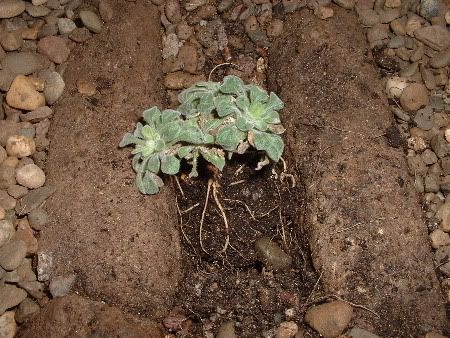
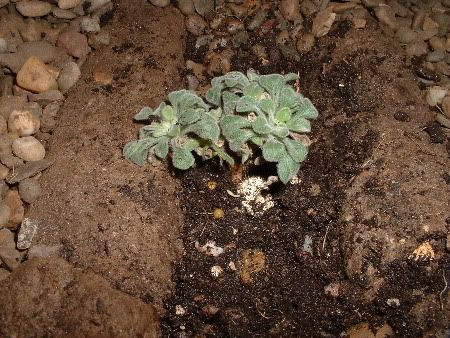
The gravel is then replaced, carefully tucking it under the leaves so that the neck of the plant is covered and the plant itself is sitting on the gravel. The whole process is repeated for the other plants.
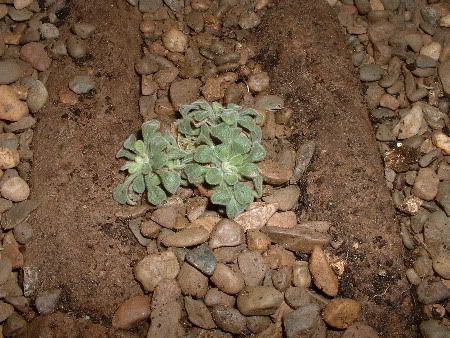
That is about it really, except to say that this is an account of what I have done, having plenty of space to build a dedicated alpine house. Many of the ideas may be adapted to suit other peoples needs etc. A friend has made himself a Crevice garden of this type on half of one side of his otherwise normal glasshouse. It works very well.